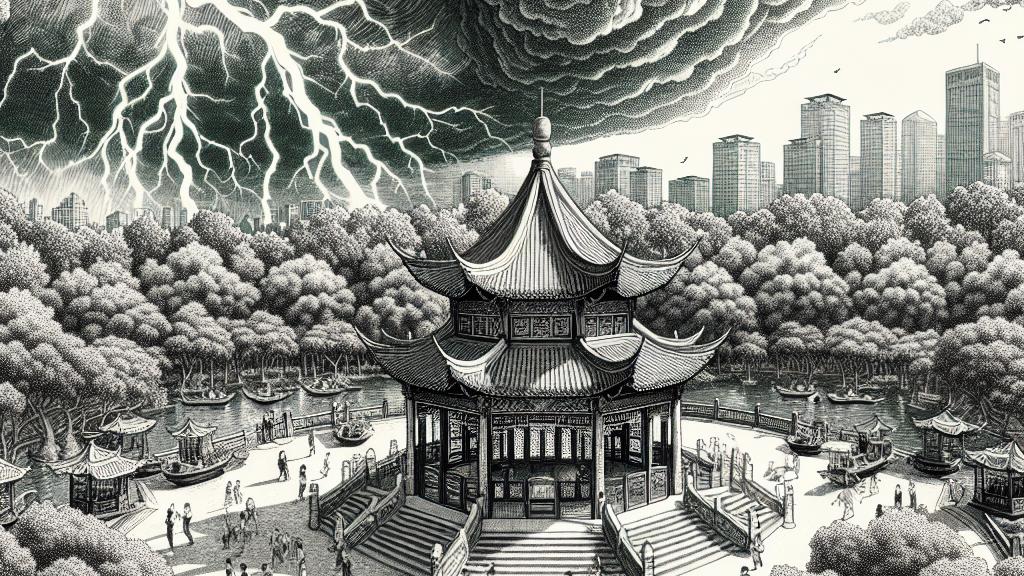Shocking Pavilion Collapse: Lightning Strikes Down Lives in China!
Overview
- A lightning strike caused a tragic pavilion collapse in Changzhou, China, on August 11, 2024.
- Six people tragically lost their lives while ten others were injured, sparking safety concerns.
- The incident underscores the rising frequency of extreme weather events linked to climate change.

The Incident in Changzhou: A Tragic Twist of Fate
On the fateful afternoon of August 11, 2024, a shocking event unfolded in Changzhou, Jiangsu province, eastern China. A park pavilion, bustling with visitors, suddenly collapsed due to a violent lightning strike, leaving six individuals dead and ten others injured. Thankfully, those injured are currently in stable condition. Witness accounts describe a sudden, terrifying scene as the structure fell, transforming a serene summer day into chaos and despair. This tragedy raises urgent questions about the structural safety of public facilities and the preparedness of cities to respond to extreme weather conditions.
The Rising Tide of Extreme Weather Phenomena
This pavilion collapse is symptomatic of a larger pattern of increasing extreme weather across China. The country has faced an unprecedented summer marked by severe storms, excessive rainfall, and prolonged droughts. In a stark reminder of this trend, a recent bridge collapse in Shaanxi province due to relentless rains resulted in 38 fatalities. Scientists attribute the rise in such weather events to climate change, emphasizing that greenhouse gas emissions are intensifying natural disasters. With record-breaking heat and storm patterns affecting various regions, addressing these climate challenges has become a pressing concern for local and national authorities.
Wider Implications: From Public Safety to Agricultural Threats
The aftermath of the pavilion disaster highlights critical issues regarding public safety and the overarching effects of climate change on agriculture. Farmers across China face mounting challenges, including crop damage from flooding and reduced yields from droughts. The situation in Chongqing exemplifies this dual threat, where extreme weather wreaked havoc on local harvests. The variability in weather patterns has sparked fears of food shortages in the world's largest food producer. This incident serves as a catalyst for discussion on enhancing disaster preparedness protocols, improving infrastructure resilience, and fostering community awareness to protect citizens from future extreme weather incidents.

Loading...